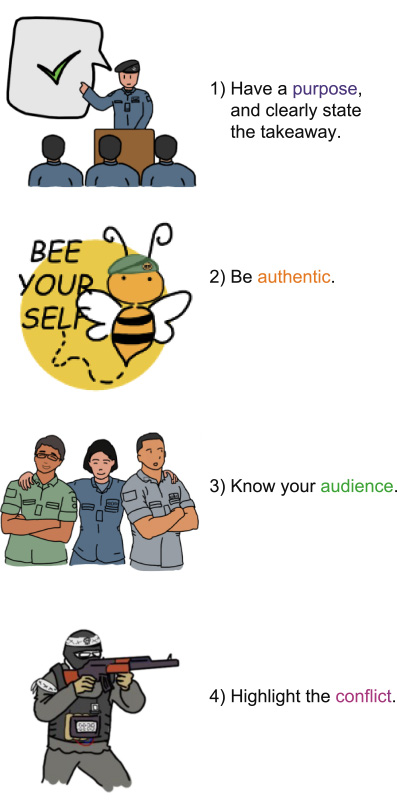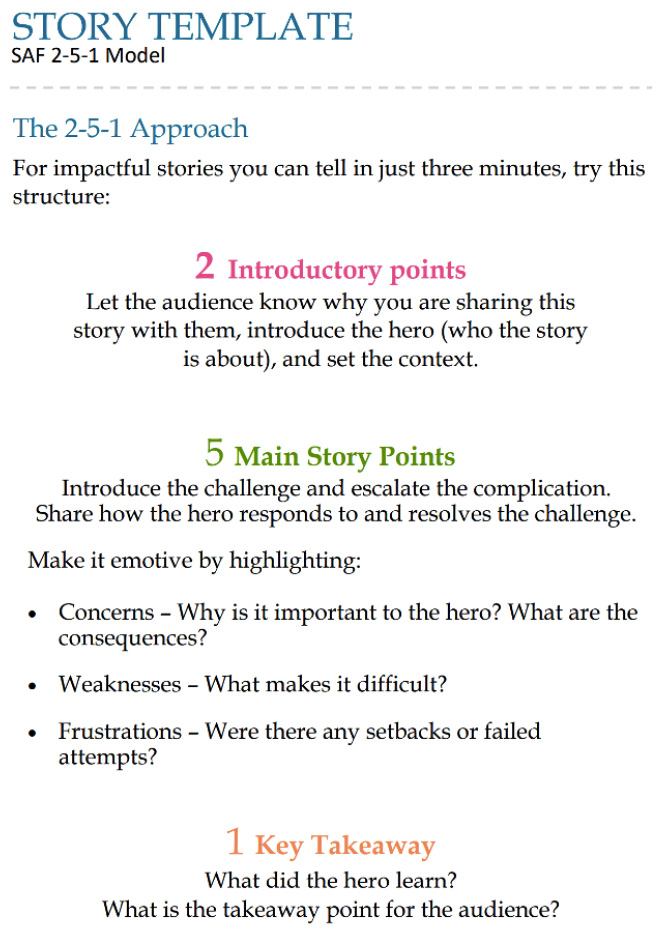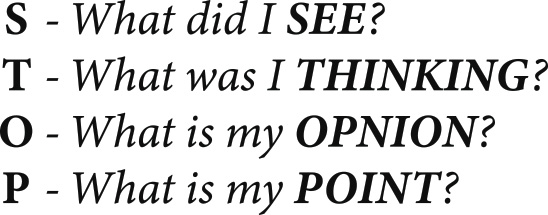Storytelling in the SAF is defined as the LD Practice of communicating personal or organisational stories systematically at all leadership levels to align beliefs and commitment, to enable mission accomplishment and organisational improvement. It is an oral art form that provides a means of preserving and transmitting ideas, images and motives that are targeted at the emotive level.
Types of Stories
Stories are considered accounts or recitals of an event or series of events which may be real or fictional. Stories can communicate values, ideas, modes of thinking, frames of reference and be used as guides for actions.
Personal Stories
Personal stories are real accounts of the “what” and “why” of our experiences. Personal stories reflect who we are as humans cognitively and emotively, defining both the way we understand ourselves and the way we relate to others and the world around us.
Organisational Stories
Organisational stories are narratives that communicate knowledge through the sharing of other’s experiences, reflecting norms and values and facilitating shared meaning. Organisational stories describe challenges that have been overcome and mistakes that have been turned into successes. Organisational stories could even be articulation of possible future states, constructed within the imaginative limits of the groups.


Useful Storytelling Tools
2-5-1 Storytelling
2-5-1 storytelling is a simple, though not simplistic, and effective way to introduce storytelling in two ways – either as an informal sharing session or as a programmed session where SAF Leaders will be asked to prepare and tell their story based on what they have experienced. This can also include team AARs and group-facilitated meetings and seminars. 2-5-1 is particularly useful in informal sharing, programmed instruction and knowledge transfer. 2 stands for self-introduction and what the story is about, 5 verbalises the past experiences in emotive forms, namely fear, concern, frustration/ anger, lessons learnt and the overall experience and 1 summarises the key takeaway of the story.

STOP Tool
Using STOP takes no more than one to two minutes to narrate an experience. It starts with what is seen (S), what the individual is thinking (T), what opinions (O) the SAF Leader holds and what is the main point (P) being put across to the audience. STOP is extremely useful in a huddle or time out, and is intended to help the SAF Leader highlight key observations for immediate action, which is an important aspect of learning.

Five Essential Elements of a Story
| S/N | Story Elements | Definitions |
| 1. | Intent | What was the incident broadly about. |
| 2. | Character | The main character of the story and his or her personal characteristics. |
| 3. | Cast | The other individuals or entities that feature in the story. |
| 4. | Scenario | The main character's goals, importance of the goal, the obstacles and struggles and actions taken by the main character. |
| 5. | Impact | The storyteller's reflection of the story, what was learned through the story and why the story is relevant and important to the audience. |
Additional Resource(s) Here: